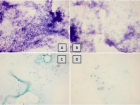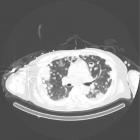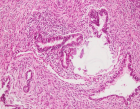Table of Contents
Impact of mandibular advancement device in quantitative electroencephalogram and sleep quality in mild to severe obstructive sleep apnea
Published on: 30th December, 2020
OCLC Number/Unique Identifier: 8899350400
Sleep related breathing disorders (SRBD) are among seven well-established major categories of sleep disorders defined in the third edition of The International Classification of Sleep Disorders (ICSD-3), and Obstructive Sleep Apnea (OSA) is the most common SRBD [1,2]. Several studies have demonstrated that obstructive sleep apnea treatment increases the quality of life in OSA patients [3-8]. Indeed, excessive daytime sleepiness (EDS), cognitive impairment (e.g., deficits in attention-concentration, memory, dexterity, and creativity), traffic accidents, and deterioration of social activities are frequently reported in untreated patients [9-11]. Furthermore, an increase in cardiovascular morbidities and mortality (systemic hypertension, stroke, cardiac arrhythmias, pulmonary arterial hypertension, heart failure) [12], metabolic dysfunction, cerebrovascular ischemic events and chemical/structural central nervous system cellular injuries (gray/white matter) has been reported in OSA patients [13-17].
Continuous positive airway pressure (CPAP) therapy is considered the gold standard for treatment of moderate-severe OSA, nevertheless there is an increasing body of evidence supporting the usefulness of mandibular advancement devices (MADs) for improving quality of life and respiratory parameters even among patients with a high severity of OSA burden [5,10,18,19]. According to the standard of care of the American Academy of Sleep Medicine (AASM), MADs are indicated for mild to moderate OSA particularly in the context of CPAP intolerance or refusal, surgical contraindication, or the need for a short-term substitute therapy [9,15,20-22]. In Cuba, CPAP machines are not readily available; they are expensive and the majority of OSA patients cannot obtain this mode of therapy. Taking into account this problem, our hypothesis was based in the scientific evidences of MAD effectiveness, considering that low cost MADs could offer a reasonable alternative treatment for patients with OSA where CPAP technology are not handy. In this way our purpose was to assess the efficacy of one of the most simple, low cost, manufactured monoblock MAD models (SAS de Zúrich) in terms of improvements in cerebral function, sleep quality and drowsiness reports in a group of Cuban OSA patients with mild to severe disease. Outcome measures included changes in the brain electrical activity, sleep quality, and respiratory parameters, measured by EEG recording with qEEG analysis and polysomnographic studies correspondingly, which were recorded before and during treatment with an MAD, as well as subjective/objective improvements in daytime alertness.
High suspicion of paradoxical embolism due to atrial septal Defect: A rare cause of ischemic stroke
Published on: 30th December, 2020
Atrial septal defect (ASD) is common among adult congenital heart diseases but rarely causes paradoxical cerebral embolism. By sharing the ASD diagnosed after the first ischemic stroke attack at the age of 49 and a case of paradoxical cerebral embolism developing accordingly, we aimed to draw attention to the necessity of detailed cardiac examination in patients with cryptogenic stroke.
Primary intracranial Hodgkin’s lymphoma after a blunt trauma: A case report
Published on: 15th December, 2020
We report a case of 30-year-old immunocompetent man, with a previous history of cranial-facial trauma, who presented with progressive left exophthalmos due to an intracranial left frontal-ethmoidal-orbital mass. Histology of the resected tumor revealed a classical Hodgkin’s Lymphoma (HL). Epstein-Barr virus encoded RNA/EBER was detected in typical Hodgkin and Reed-Sternberg cells. After postoperative radiotherapy and chemotherapy administration, the patient remains free of systemic disease or recurrence on 4 years of follow-up.
Intracranial involvement by HL has rarely been described, mostly as a late localization or as a recurrence of a disseminated disease, in a setting of immunosuppression. Primary HL of the central nervous system occurring as an isolated disease is even more uncommon, with only 16 reported cases documented to date. The prognosis of these rare cases appears comforting with appropriate treatment. Tumor resection and, in appropriate cases, treatment with radiation and/or chemotherapy seem to warrant a durable response. For this reason a systemic disease should be excluded in all cases intracranial HL by a comprehensive work-up.
To the best of our knowledge, this case represents the first report that documents the association of intracranial HL and local trauma with subsequent intracranial infection.
Post-stroke dizziness of visual-vestibular cortices origin
Published on: 27th November, 2020
OCLC Number/Unique Identifier: 8799408842
Many patients with chronic cerebrovascular diseases complain “dizziness”, which is a distortion of static gravitational orientation, or an erroneous perception of motion of the sufferer or of the environment. In the vestibular cortical system, the parieto-insular vestibular cortex (PIVC) serves as the core region having the strong interconnections with other vestibular cortical areas and the vestibular brainstem nuclei. By forming the reciprocal inhibitory interactions with the visual cortex (VISC), it also plays a pivotal role in a multisensory mechanism for self-motion perception. In a line of our studies on post-stroke patients, we found that there was a significant decrease in the cerebral blood flow in both the VISC and PIVC in the patients who suffered from dizziness. In this article, we provide a new concept that due to dysfunction of the visual-vestibular interaction loop, low cerebral blood perfusion in the PIVC and VISC might elicit post-stroke dizziness.
Atlantoaxial subluxation in the pediatric patient: Case series and literature review
Published on: 26th November, 2020
OCLC Number/Unique Identifier: 8799428362
Objective: Atlantoaxial subluxation (AAS) occurs when there is misalignment of the atlantoaxial joint. Several etiologies confer increased risk of AAS in children, including neck trauma, inflammation, infection, or inherent ligamentous laxity of the cervical spine.
Methods: A single-center, retrospective case review was performed. Thirty-four patients with an ICD-10 diagnosis of S13.1 were identified. Demographics and clinical data were reviewed for etiology, imaging techniques, treatment, and clinical outcome.
Results: Out of thirty-four patients, twenty-two suffered cervical spine trauma, seven presented with Grisel’s Syndrome, four presented with ligamentous laxity, and one had an unrecognizable etiology. Most diagnoses of cervical spine subluxation and/or instability were detected on computerized tomography (CT), while radiography and magnetic resonance imaging (MRI) were largely performed for follow-up monitoring. Six patients underwent cervical spine fusion, five had halo traction, twelve wore a hard and/or soft collar without having surgery or halo traction, and eight were referred to physical therapy without other interventions.
Conclusion: Pediatric patients with atlantoaxial subluxation may benefit from limited 3D CT scans of the upper cervical spine for accurate diagnosis. Conservative treatment with hard cervical collar and immobilization after reduction may be attempted, but halo traction and halo vest immobilization may be necessary. If non-operative treatment fails, cervical spine internal reduction and fixation may be necessary to maintain normal C1-C2 alignment.
Epilepsy due to Neurocysticercosis: Analysis of a Hospital Cohort
Published on: 24th September, 2020
OCLC Number/Unique Identifier: 8799421474
Introduction: Neurocysticercosis (NCC) is a common helminthic infection of the nervous system that occurs when humans become intermediate hosts in the life cycle of the pig tapeworm (Taenia solium) after ingesting its eggs. The objective of this study was to analyze socio-demographic, clinical and paraclinical features of patients with NCC in Lubumbashi, DRC.
Methods: This is a cross-sectional study conducted over a period of 2 years within the Neuropsychiatric Center of Lubumbashi. Socio-demographic, clinical, paraclinical and therapeutic features were studied.
Results: A total of 18 patients with NCC were listed. Epilepsy was found in 72.2% (13/18) of the cases. The mean age of the patients was 30.2 ± 13.5 years; males accounted for 61.2% of the cases. 84.6% were consumers of pork. Generalized epilepsy was found in 84.6% of the cases and hypereosinophilia in 38% of the cases. On the neuroimaging, the parietal location of lesions represented 92.3%; calcifications were the type of lesion in 53.8% of the cases and 69.2% of the cases presented lesions in the 4th evolutionary stage. Electroencephalogram was normal in 84.4% of the cases. Phenobarbital was the antiepileptic drug used in 69.3%; albendazole and prednisone were used in 53.9% of the cases.
Conclusion: This study shows that NCC is one of the causes of epilepsy in Lubumbashi. Generalized tonic-clonic seizures are the most common form of presentation and calcified parenchymal lesions are the most common radiological feature of NCC. So, any patient with acute onset of afebrile seizure should be screened for NCC provided other common causes been ruled out.
Central nervous system diseases associated with blood brain barrier breakdown - A Comprehensive update of existing literature
Published on: 25th August, 2020
OCLC Number/Unique Identifier: 8799409922
Blood vessels that supply and feed the central nervous system (CNS) possess unique and exclusive properties, named as blood–brain barrier (BBB). It is responsible for tight regulation of the movement of ions, molecules, and cells between the blood and the brain thereby maintaining controlled chemical composition of the neuronal milieu required for appropriate functioning. It also protects the neural tissue from toxic plasma components, blood cells and pathogens from entering the brain. In this review the importance of BBB and its disruption causing brain pathology and progression to different neurological diseases like Alzheimer’s disease (AD), Parkinson’s disease (PD), Amyotrophic lateral sclerosis (ALS), Huntington’s disease (HD) etc. will be discussed.
Visual evoked potentials: Normative values from healthy Senegalese adults
Published on: 11th August, 2020
OCLC Number/Unique Identifier: 8652203971
Introduction: Visual evoked potentials (VEPs) are potential differences recorded on the scalp in response to visual stimulation. They are obtained with slowly repeated stimuli. The aim of this study was to determine the normative values of the visual evoked potentials in our setting.
Methodology: We conducted a cross-sectional study from February 1 to April 30, 2019 at the Clinical Neurophysiology laboratory of the I.P. Ndiaye Clinic at CHNU Fann in Dakar (Senegal).
Results: We found that men had high averages of N75, P100 and N145 wave latencies and low averages of P100 wave amplitude (p>0.05). However, neither age nor body mass index influenced the parameters of VEPs.
Conclusion: Sex is important physiological variable in establishing laboratory normative values for VEPs. There is a marked difference between the sexes for the VEPs parameters.

If you are already a member of our network and need to keep track of any developments regarding a question you have already submitted, click "take me to my Query."


















































































































































